This article was co-authored by Deanne Pawlisch, CVT, MA. Deanne Pawlisch is a Certified Veterinary Technician, who does corporate training for veterinary practices and has taught at the NAVTA-approved Veterinary Assistant Program at the Harper College in Illinois and in 2011 was elected to the board of the Veterinary Emergency and Critical Care Foundation. Deanne has been a Board Member of the Veterinary Emergency and Critical Care Foundation in San Antonio, Texas since 2011. She holds a BS in Anthropology from Loyola University and an MA in Anthropology from Northern Illinois University.
This article has been viewed 31,124 times.
Ear infections are not common in cats, but they need to be identified and treated as soon as possible. Untreated ear infections can lead to problems with the eardrum, in addition to causing your cat unnecessary pain. First, notice any symptoms, like ear sensitivity, ear discharge, and balance problems. Then, take your cat to the vet for an exam, and then give your cat the proper medication to treat the infection.
Steps
Recognizing Symptoms of Ear Infections
-
1Notice any ear sensitivity. Ear infections can make your cat’s ears sensitive to touch. You may notice this when you pet your cat’s head. They may shy away from you or react negatively if you touch their ears.[1]
- You may try to massage near the base of the cat’s ear. If they have an ear infection, they will feel discomfort.
-
2Look for excessive scratching. Ear infections can cause a lot of itching and discomfort. Due to this, your cat may scratch at their ears or rub them against the floor or soft objects. Watch your cat for targeted scratching around their ears.[2]
- Due to this scratching, the ears or head may end up with wounds or trauma.
- Your cat may also shake their head a lot.
Advertisement -
3Check for any discharge. Another common symptom that occurs with ear infections is discharge. This may be debris around the opening of the ear canal or inside of the ear, or it may be wet pus-like discharge. This discharge may have a bad odor.[3]
- The discharge may be yellow, dark brown, or black in color. It may be crusty on the ear or be thick and oozing.
- Debris in the ear canal can be caused by ear mites.
-
4Look for problems walking. Some infections deep in the ear can cause your cat to walk awkwardly. They may tilt their head to one side as they walk, or they may have balance problems and lack coordination.[4]
- Your cat may also walk around in circles as they tilt their head.
-
5Check for any redness and swelling. Your cat’s ear may be red due to the infection or constant scratching and rubbing. The skin inside the ear and around the ear canal may also be irritated and red. The skin of the ear may also be swollen.[5]
- Check for any red nodules or blood-filled pockets inside the ear.
- Also look for scabs behind or around your cat's ear.
- The ear could also be hot to the touch.
Diagnosing Ear Infections
-
1Take your cat to the vet. When you suspect an ear infection, immediately seek medical treatment for your cat. The vet will need to do an examination of the ears to determine the type of infection and the cause of it.[6]
- Make sure to give the vet a full medical history of the cat in case there are any underlying issues related to the infection.[7]
- Trying to treat the infection at home may not work since you don’t know what kind of infection it is or what caused it.
-
2Check the ear. If the vet suspects an ear infection, they will use an otoscope to check the inside of the ear. The instrument helps magnify and provide light on the inside of the ear so they can get a good look at the middle and inner ear.[8]
- They will also be able to tell if the eardrum is still intact.
- During the examination of the ear, the vet will also be to see if there is something lodged in the ear. They will also check for tumors.
-
3Undergo other tests. Your cat may need to have other tests to determine the extent of the infection. Your vet may test any debris found in your cat's ear, and they may suggest an x-ray of the head.[9] In rare cases, your vet may draw fluid from the middle of your cat's ear with a needle.[10]
- Other tests may include blood tests, urine tests, CT scans, or MRIs.
-
4Examine a sample from the ear. Your vet will swab the inside of your cat’s ear for a sample. This is especially important if the ear has discharge of any sort. The vet will then look at the sample under a microscope.[11]
- This helps the vet figure out what type of infection your cat has. The type of infection determines the treatment. For example, there are bacterial and yeast infections.
-
5Sedate the cat if necessary. If your cat has an ear infection that is severe, the vet may have to sedate the cat or put them under anesthesia. This only occurs if the cat is in too much pain for the vet to touch the ears, or if discharge or swelling blocks the view inside the ear.[12]
- The risks of sedating your cat include allergic reactions, swelling at the site of the injection, and in rare cases, death. However, most cats go under sedation without any problems. Talk to your vet about your cat's health and age to determine if sedation is right for them.[13]
- If your cat has a severe infection or has something lodged in their ear, removing it or cleaning the ear without sedation can be too painful, so sedation helps reduce this pain risk for your cat.
Treating Ear Infections
-
1Give your cat antibiotics. If your cat has a severe infection, the vet will prescribe oral antibiotics or antibiotics that need to be injected. This is usually given along with topical antibiotics, antifungals, or antiparasitics that you put directly on the ear.[14]
- The vet may also prescribe ear drops, sprays, or creams to put on the ear.[15]
-
2Remove any foreign bodies. If something is lodged inside the ear, like a piece of grass, your vet will need to extract the foreign bodies. The cat will be sedated or put under anesthesia. The vet will remove the item from the ear.[16]
- You will have to give your cat prescribed medication to heal the infection.
-
3Flush the ear. In some cases, the cat’s ear may need to be flushed. The vet will clean out the ear canal of any debris and discharge. If the cat is in too much pain, they will be sedated.[17]
- The vet may also cut or remove some of the hair around the ear to reduce the risk of reinfection and to help it air out as it heals.
-
4Undergo surgery. If your cat has a severe infection, or they have recurring infections, then the vet may have to do surgery. During surgery, they may drain fluid buildup or repair the eardrum. They may also remove tumors or polyps during surgery.[18]
- Make sure a board certified veterinary dermatologist has recommended the surgery.
- Only allow a board certified veterinary surgeon to perform the surgery.
- In extreme and rare cases, a veterinarian may remove and close the ear canal.
References
- ↑ https://vcahospitals.com/know-your-pet/ear-infections-in-cats-otitis-externa
- ↑ https://vcahospitals.com/know-your-pet/ear-infections-in-cats-otitis-externa
- ↑ http://www.vetstreet.com/care/chronic-ear-infections-chronic-otitis-in-cats
- ↑ http://www.pethealthnetwork.com/cat-health/cat-diseases-conditions-a-z/ear-infections-cats
- ↑ http://www.vetstreet.com/care/chronic-ear-infections-chronic-otitis-in-cats
- ↑ https://vcahospitals.com/know-your-pet/ear-infections-in-cats-otitis-externa
- ↑ http://www.pethealthnetwork.com/cat-health/cat-diseases-conditions-a-z/ear-infections-cats
- ↑ https://vcahospitals.com/know-your-pet/ear-infections-in-cats-otitis-externa
- ↑ http://www.peteducation.com/article.cfm?c=1+2123&aid=1564
- ↑ http://www.petmd.com/cat/conditions/ears/c_ct_otitis_media_interna
- ↑ http://www.vetstreet.com/care/chronic-ear-infections-chronic-otitis-in-cats
- ↑ https://vcahospitals.com/know-your-pet/ear-infections-in-cats-otitis-externa
- ↑ http://www.pethealthnetwork.com/cat-health/cat-surgery-a-z/anesthesia-and-your-cat
- ↑ http://www.peteducation.com/article.cfm?c=1+2123&aid=1564
- ↑ http://www.pethealthnetwork.com/cat-health/cat-diseases-conditions-a-z/ear-infections-cats
- ↑ https://vcahospitals.com/know-your-pet/ear-infections-in-cats-otitis-externa
- ↑ http://www.vetstreet.com/care/chronic-ear-infections-chronic-otitis-in-cats
- ↑ http://www.peteducation.com/article.cfm?c=1+2123&aid=1564
About This Article
If your cat is displaying signs of an ear infection, like ear sensitivity, excessive scratching, ear discharge, balance and coordination problems, or ear swelling, take it to the vet for an exam. The vet will likely give your cat antibiotics to treat the infection, as well as some medicated drops, sprays, or creams to put on its ear. In some cases, your cat’s ear may need to be flushed to clean the canal of debris or discharge. If it's in a lot of pain, talk to the vet about having your cat sedated for the procedure. For severe or recurring ear infections, ask the vet if surgery to repair the eardrum and drain fluid buildup would help. For advice from our Veterinary co-author, like how to check your cat’s ear for discharge, keep reading.
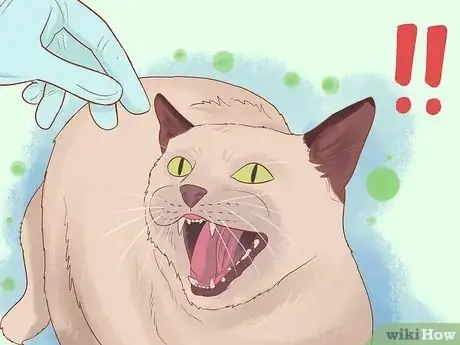
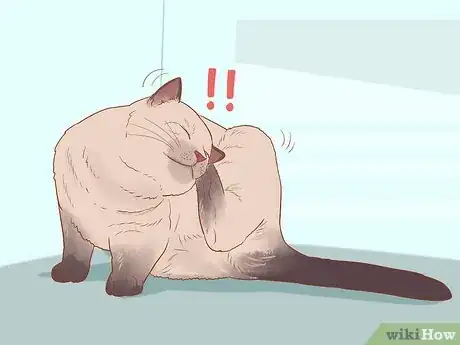



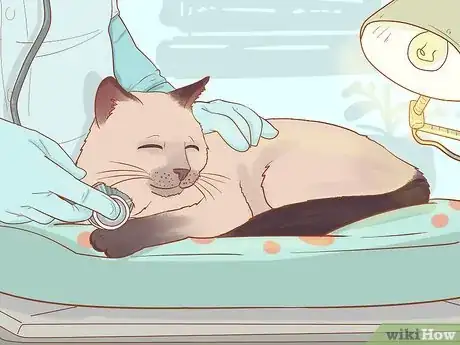
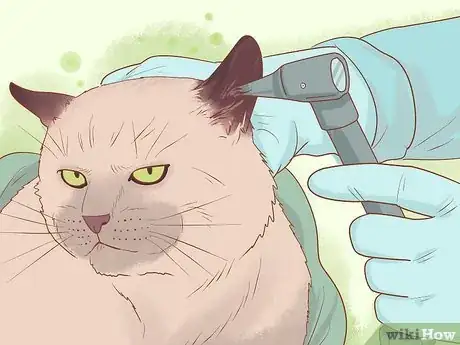

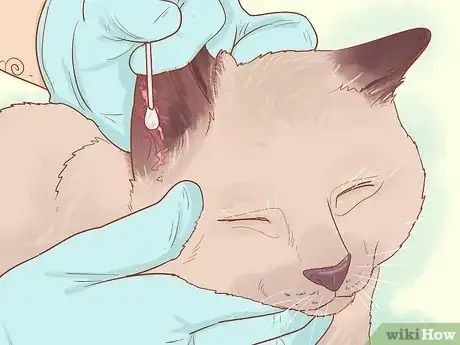
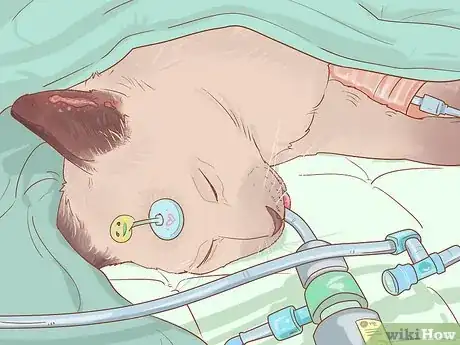
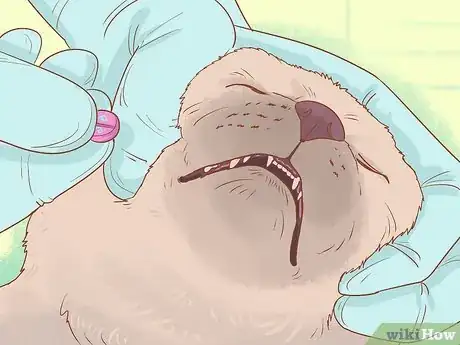
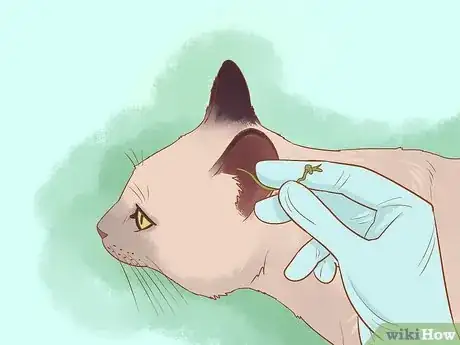
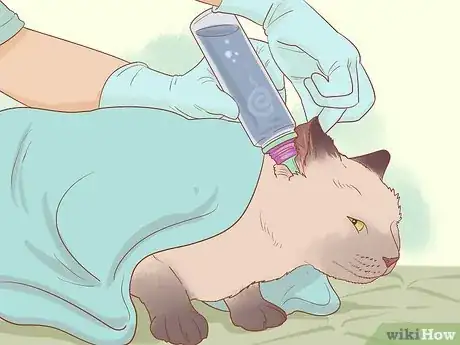













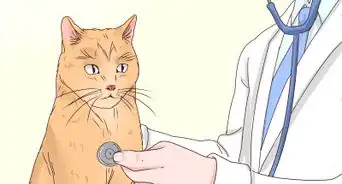
















































Medical Disclaimer
The content of this article is not intended to be a substitute for professional medical advice, examination, diagnosis, or treatment. You should always contact your doctor or other qualified healthcare professional before starting, changing, or stopping any kind of health treatment.
Read More...